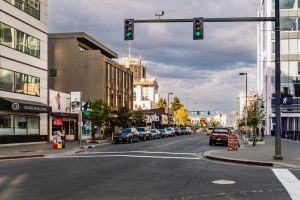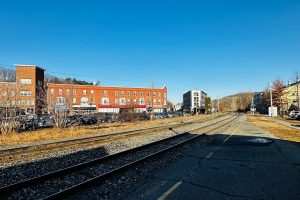People’s travel choices and behaviors are shifting, introducing profound uncertainty for transportation agencies. Real-world data reveal new norms, such as flattened peak travel times and persistent telecommuting, signaling fundamental changes in how, when, and why people travel. This uncertainty challenges transportation agencies to rethink their strategies across planning, funding, and service delivery. Understanding customer experience has become more critical than ever, as agencies seek to retain riders, address safety concerns, and adapt services to meet evolving needs. Robust and effective data collection lies at the heart of these efforts, enabling better decisions in an environment defined by change.
Challenges Facing Transportation Agencies
A central challenge transportation agencies face is how to efficiently allocate resources. Limited and often shifting funding constrains significant infrastructure improvements, leaving agencies grappling with financial uncertainty and staffing limitations. Many agencies simply do not have the resources to take on the scale of investment needed to make transformative changes or support infrastructure at levels that would meaningfully shift outcomes.
Transit agencies, in particular, are contending with an uneven ridership recovery post-pandemic. While ridership is rebounding, it remains below pre-pandemic levels for some transit systems and routes, driven by sustained remote and hybrid telework. Some agencies now face the ever-complex task of shifting from traditional peak commuter routes to more balanced, all-day services.
Recent research conducted by RSG highlighted that perceptions of personal safety significantly influence transportation decisions. These findings compel agencies to rethink service delivery and invest in more customer-centric improvements—not just by addressing actual safety incidents but also by recognizing that perception is just as important.

In the Minneapolis region, data from the Travel Behavior Inventory showed that significant VMT reductions were only possible when bike access, e-bike availability, and transit frequency were improved together, highlighting the need for integrated land-use and transportation strategies.
Additionally, transportation and land-use policies frequently remain disconnected, complicating efforts to reduce vehicle miles traveled (VMT). The Travel Behavior Inventory, which is the household travel survey RSG has conducted for the Metropolitan Council, illustrates the difficulty of achieving significant VMT reductions without comprehensive land-use reforms. In this case, analysis of the data collected has revealed that only by universally facilitating biking, providing widespread access to e-bikes, and substantially increasing transit frequency did the tested scenario demonstrate a notable 25 percent reduction in VMT. Transportation and land use are deeply linked but often treated as separate spheres, limiting real progress on sustainability and mobility goals.
How Data Collection and Strategic Modeling Can Inform Transportation Planning
The importance of data-driven decision-making in transportation has never been more evident. Household travel surveys leveraging GPS-enabled apps, such as rMove®, have significantly improved data accuracy, providing agencies with detailed, location-specific insights. The Skagit Travel Survey, conducted by RSG for the Skagit Council of Governments in Washington State, captured markedly flattened peaks in daily travel patterns due to hybrid and flexible work schedules, allowing planners to adjust models accordingly. These kinds of localized insights offer a level of granularity that’s essential to making informed decisions in today’s climate.
Complementing quantitative data, qualitative research methods have gained increased attention among agencies looking to uncover deeper insights. In Oregon, RSG conducted extensive qualitative interviews with traditionally underrepresented populations to add depth to household travel survey data our team collected in that state. This approach reflects a broader trend: pairing qualitative research with surveys to inform more targeted and effective policy decisions. Recent research conducted by RSG pertaining to personal safety on transit similarly employed qualitative methods to better understand rider perceptions, leading to tangible improvements.

Anchorage’s recent MTP update demonstrated how merging scenario planning with stakeholder input can strengthen transportation strategies, resulting in a more responsive and community-informed plan.
Innovative modeling tools, including strategic and scenario-planning applications such as VisionEval, enable agencies to swiftly test numerous future scenarios. Anchorage’s recent Metropolitan Transportation Plan (MTP) update notably combined strategic and travel demand model development simultaneously with stakeholder-driven planning. By integrating processes typically run sequentially, stakeholder insights directly shaped modeling outcomes in the AMATS case, significantly enhancing the responsiveness and relevance of the final plan. Strategic planning models like these now allow planners to evaluate hundreds of future conditions quickly, which is crucial in a landscape where certainty is in short supply.
Transportation Planning Trends: Scenario Planning and Predictive Tools
Transportation planners increasingly use scenario planning to proactively address uncertainty. Instead of relying solely on traditional forecasts, agencies can now identify so-called “no-regrets” strategies, which are approaches deemed effective across multiple plausible futures. In Vermont and Anchorage, scenario planning linked qualitative community input with quantitative modeling, strengthening transparency, building public trust, and empowering communities to influence their transportation futures meaningfully.
Strategic planning models that rapidly evaluate numerous scenarios are also becoming widely adopted, most notably in the case of Oregon where they used VisionEval to inform the development of the Oregon Transportation Plan to help guide investment decisions that support the movement of people and goods across the state as far out as 2050. This modeling flexibility equips planners to better anticipate unexpected developments, from technological disruptions to climate-related impacts. In this context, better data starts with knowing what data is missing, and many agencies are focusing on identifying and filling critical gaps.
Transit is evolving rapidly, driven by advances in technology. Agencies are using real-time data and predictive analytics to optimize routes, adjust service levels, and improve reliability. Integrated mobility platforms and contactless payment systems are streamlining the rider experience, making transit more convenient and accessible.
Strategic Planning for Transportation’s Future
To effectively navigate tomorrow’s transportation landscape, agencies must act strategically today by prioritizing stakeholder collaboration, targeted data collection, and customer-centric solutions. Stakeholder engagement, as illustrated by RSG’s recent work on the 2025 Vermont Rail Plan, has revealed areas for greater collaboration between economic development entities and transportation planners across the state, underscoring the necessity of coalition-building and proactive communication to align investments and secure shared resources.

The Vermont Rail Plan, informed by broad stakeholder input, has identified opportunities to strengthen rural access and economic connectivity via the state's rail system.
Identifying and addressing critical data gaps is also essential. For example, there remains an acute lack of comprehensive data on pedestrian and cyclist safety. Unlike vehicle crashes, many nonmotorized incidents go unreported, severely limiting predictive capabilities and prevention efforts. Filling these gaps with targeted data collection initiatives using innovative location-aware technologies could vastly enhance safety planning.
For transit agencies, improving customer experience, especially in the domain of safety and reliability, remains paramount. By understanding and addressing riders’ key concerns, agencies can strengthen public confidence and support long-term ridership growth. Transit research conducted by RSG in rural Vermont, for instance, has vividly illustrated how transportation availability directly impacts people’s ability to access vital services, underscoring transit’s critical role in maintaining quality of life. When the system meets their needs, riders are more likely to stay engaged and support its growth.
Four Data-Driven Takeaways for Resilient Transportation Systems
Today’s transportation challenges demand thoughtful strategies firmly rooted in innovative, data-driven approaches. As travel behaviors continue to shift amid growing uncertainty, agencies must adopt flexible frameworks with a range of tools in their toolkit, including household travel surveys, transit market research, and advanced data collection techniques to support effective modeling. This flexible approach is what is now required to solve the transportation challenges of today and tomorrow.
Synthesizing key insights from recent research and our experience with clients navigating uncertainty reveals four essential takeaways:
- Integrated Planning: Transportation and land-use policies must be aligned to meaningfully reduce vehicle miles traveled, as demonstrated by findings from RSG’s Metropolitan Council study.
- Comprehensive Data Collection: Combining quantitative household travel surveys with qualitative insights can significantly enhance planning accuracy and responsiveness, as evidenced by RSG's recent work in this space.
- Flexible Scenario Planning: Using strategic modeling to quickly test numerous scenarios, as in Anchorage and Vermont, strengthens agency preparedness for future uncertainty.
- Customer-Centric Approaches: Prioritizing rider safety, reliability, and overall user experience, as emphasized by recent qualitative transit market research, is a critical tool in the toolkit for agencies looking to rebuild and sustain transit ridership post-pandemic.
Ultimately, effective transportation planning requires technical expertise, foresight, adaptability, and a deep commitment to serving community needs. Agencies that embrace these principles will build resilient, efficient transportation systems capable of delivering lasting value and successfully navigating the uncertainties ahead.
·····························
At RSG, we empower transportation agencies to navigate uncertainty with clarity. Through high-quality data, custom modeling tools, and unmatched expertise, we help you make informed planning and investment decisions. Whether you’re updating your regional plan or exploring the latest travel behavior trends, our team is ready to support your success. Contact us today to discover how we can help drive your next planning initiative forward.


